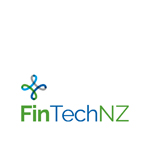Source: ANZ
With an innovative culture, good skills and businesses that know each other and collaborate already, New Zealand is an ideal petri dish to develop blockchain technology, according to a panel of experts.
“It’s got all the ingredients a country needs to develop blockchain technology inside its own borders,” Rupert Colchester, IBM New Zealand and Australia’s Head of Blockchain says.
“A tight business community gives you a real advantage.” – Colchester
The comments were made as part of a panel discussion into how blockchain technology can be applied to solve problems at a local-business level.
“The business ecosystems in both Australia and New Zealand are nicely ‘packaged’, to make testing of new technologies like blockchain easier,” Colchester said. “A tight business community gives you a real advantage.”
“The important step is now developing a strategic approach, which starts with looking at business problems and building an ecosystem of participants and beneficiaries around the solution to these problems.”
The panel – part of an event hosted by ANZ NZ and run for businesses in Auckland, Wellington and Christchurch – heard in NZ and indeed globally there has been growing interest in cryptocurrency and its underlying technology, blockchain.
It’s estimated by the end of 2020 more than $US2.1 billion will be spent developing blockchain solutions and blockchain’s market value will be $US3 trillion by 2024.
A firm grasp
IDG Connect research shows approximately 13 per cent of senior IT managers have plans to implement blockchain, illustrating the importance of ensuring management and boards understand the implications of this technology.
Two companies leading the innovation in NZ are NZ Post and Air New Zealand.
Earlier this year NZ Post announced it was working with Chinese e-commerce giant Alibaba to use blockchain to improve supply chain transparency and food-safety assurances with partners Fonterra and Blackmores.
NZ Post Manager Strategy and Strategic Partnerships Dene Green said blockchain is an important tool in supply chain management.
“Blockchain is a game changer as it provides trust and security across the supply chain,” he said.
“New Zealand’s brand is so closely aligned to premium food products, so it makes sense to have greater visibility across the whole supply chain.”
“Consumers, particularly in markets like China, demand food safety assurances. Blockchain is a great way to do this by having an accurate view of the paddock-to-plate process.”
Green said the challenge for NZ is creating a ‘Food Trust Framework’ where blockchain can be made accessible in a regulatory environment to all NZ food producers, particularly eCommerce platforms.
“This certified process will be used by China and other export markets, helping us take advantage of upcoming opportunities,” he said. “For instance, in the future EU trade deal greater supply chain transparency will be important.”
Accurate
Air New Zealand is also investigating blockchain technology with a small group of partners in the Flight Operations, Engineering and Maintenance business areas.
Mike Nooney, Air New Zealand Head of Architecture said key to their early trials of blockchain has been collaborating with others.
“We used design-led thinking to first define the problem we’re looking to solve with a small, closed loop of partners,” he said. “Blockchain is transformative but at the end of the day it’s still technology so needs to be applied like any other solution.
“We also applied an Amazon technique of starting the design process by writing the press release for its launch.”
Stephen Macaskill, Dasset CEO, New Zealand’s largest trading platform for digital currencies, said blockchain is more than just cryptocurrencies with tokenisation being applied to a range of opportunities, particularly for recognising the value of the world’s under-utilised assets.
“Tokenisation is allowing blockchain to be applied to a wider range of digital assets such as data storage and identity,” Macaskill said. “This is also making access to capital markets more accessible for anyone with a mobile device, a data plan and a fraction of a penny.”
Emma Mellow is a bluenotes contributor






